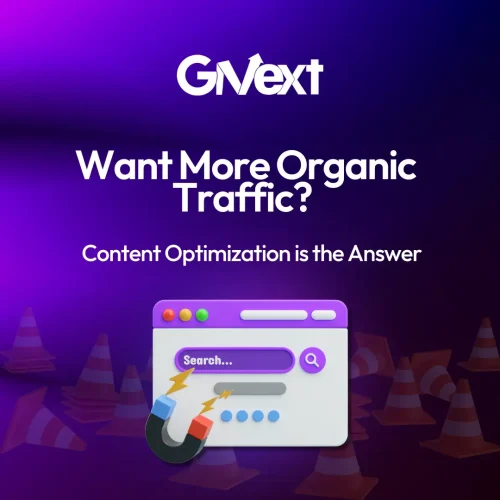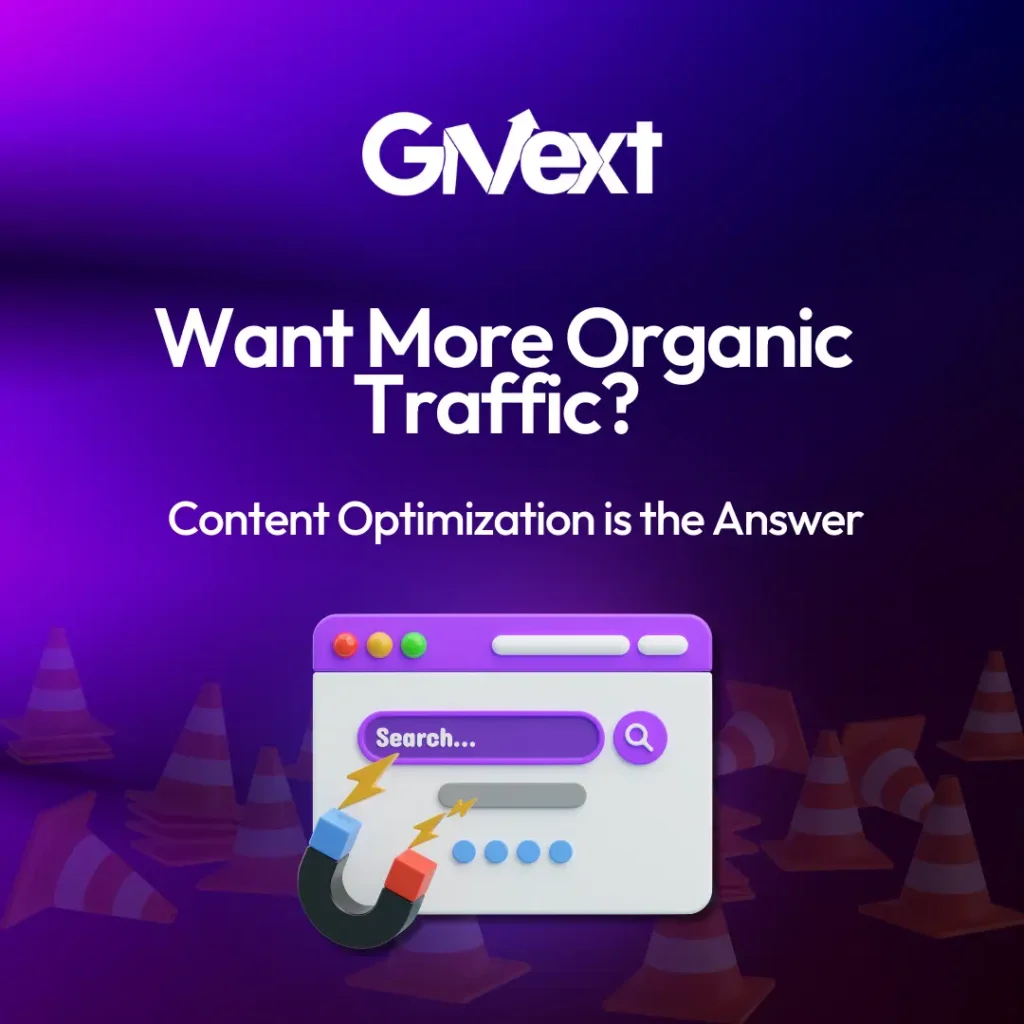Want More Organic Traffic? Content Optimization is the Answer

Table of Contents:
Understanding Organic Traffic
Why Content Optimization Matters
Essential Content Optimization Strategies
Keyword Research: The Foundation of Content Optimization
Technical Aspects of Content Optimization
Measuring Success and Refining Your Strategy
Taking Your Organic Traffic to the Next Level
Understanding Organic Traffic
Organic traffic refers to visitors who land on your website through unpaid search results. Unlike paid traffic that comes from advertisements, organic traffic is generated when your content ranks well in search engine results pages (SERPs) for relevant keywords. This type of traffic is particularly valuable because it’s targeted—these visitors are actively searching for information related to your business.
For small business owners, organic traffic represents a sustainable, cost-effective way to attract potential customers. When someone finds your website through a search engine, they’re already interested in what you offer, making them more likely to engage with your content and potentially convert into customers.
Why Content Optimization Matters
Content optimization is the process of creating and refining website content to improve its visibility in search engines while providing value to your audience. It’s not just about pleasing search engines—it’s about creating content that resonates with real people.
The key to successful Content Optimization lies in finding the balance between search engine requirements and user experience. Search engines like Google are designed to provide users with the most relevant and valuable information. When you optimize your content properly, you’re essentially helping Google understand that your website offers what searchers are looking for1.
Effective content optimization leads to:
Higher rankings in search results
Increased organic traffic
Better user engagement
Improved conversion rates
Enhanced brand authority
Essential Content Optimization Strategies
1. Optimize for Humans, Not Just Search Engines
One of the biggest mistakes businesses make is focusing too heavily on optimizing for search engines while neglecting the human element. Remember that search engines look at user behavior metrics like dwell time and pages visited to determine how useful your content is3.
Write in a language and style that makes sense to your audience. This approach will keep people on your pages longer, which signals to search engines that your content is valuable. As a result, your rankings will improve, bringing more organic traffic to your website3.
2. Create High-Quality, In-Depth Content
Search engines prefer content that is helpful, reliable, and written for real people. To create high-quality content that ranks well:
Research thoroughly to ensure your content is informative and accurate
Consult the SERPs to see what’s already performing well
Write comprehensively to cover topics completely
Use authoritative sources to back up your claims
Include unique insights and original data
Keep sentences short and clear
Use proper formatting to enhance readability2
3. Build Topic Clusters
Topic clusters help search engines understand your brand’s areas of expertise while allowing you to rank for multiple keywords supporting one topic. To build effective topic clusters:
Identify broad topics relevant to your business (pillar content)
Brainstorm subtopics that support each main pillar
Find target keywords for each subtopic
Create content that links these topics together5
This approach not only helps with SEO but also creates a more organized content structure for your visitors.
4. Refresh Existing Content
User intent and related topics for search terms change over time. Regularly updating your existing content ensures it remains relevant and continues to drive organic traffic. Content pruning—identifying older, underperforming content and deciding whether to improve or delete it—should be part of your optimization strategy5.
Keyword Research: The Foundation of Content Optimization
Effective keyword research is the cornerstone of any successful content optimization strategy. It helps you find your SEO sweet spot—the overlap between keywords that aren’t too difficult to rank for and topics you can confidently create excellent content about8.
Finding the Right Keywords
Start by identifying 5-10 topic buckets relevant to your business. These might be topics you blog about frequently or that come up in sales conversations. Then, brainstorm specific keyword phrases that fall into these buckets8.
For example, if “content optimization” is one of your topic buckets, related keywords might include:
Content optimization strategy
How to optimize website content
SEO content optimization
Content optimization tools
Website content optimization tips
Understanding Keyword Types
Different types of keywords serve different purposes:
Short-tail keywords are typically 1-2 words and have high search volume but also high competition. Examples include “content optimization” or “SEO tips.”
Long-tail keywords are more specific phrases (usually 3+ words) with lower search volume but higher conversion potential. These are particularly valuable for small businesses because they’re less competitive and attract more targeted traffic7.
A good rule of thumb is to focus on one or two long-tail keywords when writing blogs or creating content for your website7.
Considering Search Intent
Understanding why someone is searching for a particular term is crucial for content optimization. There are four main types of search intent:
Informational: Users want to learn something
Commercial: Users are researching products or services before buying
Navigational: Users want to find a specific website or page
Transactional: Users are ready to buy or take action4
Aligning your content with the appropriate search intent increases the likelihood of ranking well and attracting the right visitors.
Technical Aspects of Content Optimization
While quality content is essential, technical optimization elements also play a crucial role in improving your organic traffic.
Title Tags and Meta Descriptions
Title tags and meta descriptions influence both search rankings and click-through rates:
Title Tags: Include your target keyword near the beginning of the title, keeping it between 50-60 characters to prevent truncation in search results2.
Meta Descriptions: While they don’t directly impact rankings, compelling meta descriptions can significantly improve click-through rates. Include your keywords naturally and keep descriptions between 70-150 characters1.
URL Structure and Headings
URL Structure: Use readable and relevant URLs that include your target keyword. This helps search engines understand what your page is about5.
Headings and Subheadings: Incorporate keywords within your H1, H2, and other heading tags to signal content relevance to search engines. This also improves readability by breaking up your content into scannable sections10.
Image Optimization
Images are content too. Optimize them by:
Including keywords in the image filename
Adding descriptive alt tags
Compressing images for faster loading
Using relevant, high-quality visuals that enhance your content1
Measuring Success and Refining Your Strategy
Content optimization is an ongoing process that requires regular monitoring and refinement. Use tools like Google Analytics or Google Search Console to track your keyword rankings and website traffic7.
Pay attention to metrics such as:
Organic traffic growth
Keyword rankings
Bounce rate
Time on page
Conversion rates
Use these insights to identify which optimization strategies are working and which need adjustment. Remember that finding the best organic keywords is not a one-time task; it requires continuous effort and refinement7.
Taking Your Organic Traffic to the Next Level
Content optimization is not just about following a set of technical rules—it’s about creating a valuable resource for your audience while making it easily discoverable by search engines.
By focusing on high-quality content that addresses user intent, conducting thorough keyword research, and implementing technical best practices, you can significantly increase your organic traffic and grow your business online.
Remember that patience is key in SEO. Content optimization takes time to show results, but the long-term benefits of sustainable organic traffic make it well worth the investment.
Ready to transform your website’s performance with expert Content Optimization? Contact us today to learn how we can help your business achieve a stronger online presence and drive more qualified traffic to your website.


